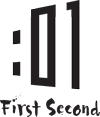test heading
I’m kind of the odd-one-out so far in this column. Everybody else
who’s contributed so far either already has a comic out through First Second, or
they’ve had a book(s) published somewhere else, and the have a book coming out
presently. They’ve all been older creators who’ve paid their dues much longer
than I have. I’m part of a pet project of Mark’s (Mark Siegel, my editor, that
is). Mark has been courting young artists like me, either freshly out of or
still in college, and his plan is to pair our somewhat undeveloped talents with
those of writers from outside the comics world, and out of these pairings
nurture unique and great works. I could hardly be more excited to be a part of
it.
However, being unexperienced and young comes with its problems. My
only experience, when I was hired on by First Second, was being an art student
at the School of Visual Arts, and self-publishing some minicomics. In both cases
I was allowed to write my own stories and draw what I wished. That ended up
creating some trouble for me.
It’s amazing how, when left to your own
devices as an artist, the things you’re “not interested in drawing”
coincidentally happen to be the things that are hardest for you to draw. Someone
(whom I’ve forgotten, being much better at remembering quotes than their
speakers) once said that a cartoonist’s style is a playing up of their strengths
in an attempt to hide their weaknesses. Mike Mignola is terrific with blacks and
graphic design, but he hates drawing perspective and cars. So Hellboy has a lot
of great black placement and terrific design, and pretty much no cars or
perspective shots requiring straight lines converging on a vanishing point. Most
superhero artists know anatomy well but can only draw a few body types, so
that’s all they draw, for every character, no matter how inappropriate or silly
it looks. They avoid drawing regular human beings as much as possible, to make
the handicap less conspicuous. In my own case, I can draw texture and flowy
things very well. Water, clouds, fire, and earth are easy for me. I can make
something feel convincingly gooey, hard, smooth, or soft with just lines. I’m
very good at composing clear, readable pages. But figure drawing is a challenge
to me, and drawing multiple figures in a panel short circuits my brain. I’m not
great with clothes. I’m terrible at drawing cars, and boxy things like houses.
So, left to my own devices, I don’t draw those things very much, and as a
result, I look like a better artist than I really am.
The script I’m
working on has many pages where nearly every panel will have 6-12 people in
frame, all needing clear arrangement. Everyone must be distinctive in form and
personality, must have all their gear and costume on in every panel, and must
fit seamlessly both into their surroundings and into the composition of the
page. And there are so. many. cars. And buildings. Fabio Moon (Or was it
Gabriel? One of the twins, anyway) wrote recently about their experience with
working with writers. They hadn’t worked with writers much before, and lately
they had been working with writers a great deal. They were saying how working
with a writer was exciting but much more challenging. They were forced to learn
to draw things they’d never have thought to draw, and they were required to
manifest visions that were not their own–to make someone else’s vision their
own. And in doing so, they found that when they went to write their own comics,
the new visual vocabulary they’d gotten from serving another’s vision had
broadened their own story possibilities.
I was greatly heartened to read
this, because at the time, I was positively desperate and struggling, putting
myself through an intense crash-course in everything from anatomy to costume to
perspective. I collected reams of reference materials for unfamiliar objects and
settings, and I was consuming comics as fast as I could by artists who I felt
did well what I worried I could not do at all. I pored over pages by Stuart
Immonen, Guy Davis, Gabriel Ba, and others, reverse engineering their
compositional decisions, seeking to patch the holes in my knowledge with their
expertise. It was so good to hear that another artist had been suffering the
same problems, and even better to hear him talk about how the process
strengthened him and made him a better, more diverse artist.
My book is
in it’s very beginning stages–you won’t see it for some time. Making it will be
a very hard process for me. There are so many things I’m not good at, or that I
don’t now enjoy doing, that I can’t avoid without copping out. I must serve my
writer’s vision the best I can, and that means finding a way to do the things I
can’t, and finding the joy in doing things that seem to me unpleasant. (I don’t
want to make it seem like a bummer, though–there’s tons of stuff in the book I
can barely wait another second to draw.) Once I finish, though, I know that I’ll
be a better artist than I ever could have been on my own.
[UP NEXT WEEK: PAUL POPE]



what softwares do you use? tell me please?
This was really interesting (and heartening). Thanks!